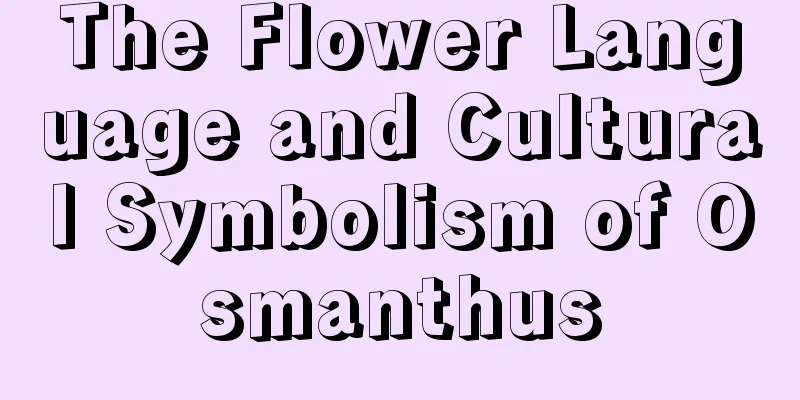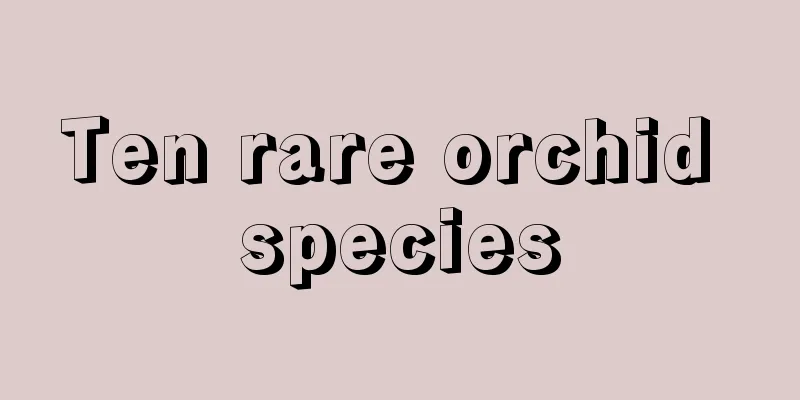The Flower Language and Cultural Symbolism of Osmanthus

The Flower Language of OsmanthusOsmanthus flowers are in cymes, clustered in the axils of leaves, growing in groups of five or six. The flowers are very fragrant, and come in colors such as yellow and orange. It is a very ornamental flower. Not only that, osmanthus is also a high-quality raw material for tea. Osmanthus can be used to make osmanthus tea, which is fragrant and soft, sweet and refreshing, and is a popular scented tea. You see, the color of osmanthus is elegant and noble, refreshing and neat, fresh and refined, so the flower language of osmanthus symbolizes nobleness, auspiciousness, beauty and loyalty. In ancient my country, osmanthus branches were used to symbolize a smooth official career and outstanding academic achievements; while in Europe and the United States, osmanthus branches are regarded as a symbol of glory and honor. The culture of osmanthusOsmanthus has been in people's vision since ancient my country. Since the Spring and Autumn Period, there have been more than 2,500 species, which are widely distributed and well-known. After the Han Dynasty, osmanthus became a precious flower and tribute, symbolizing beauty, and was thus often used as a tribute to the royal family and nobles. During the Tang Dynasty, osmanthus was often quoted by literati to express their feelings in poetry. Liu Zongyuan moved more than ten osmanthus plants from Hengyang, Hunan Province and planted them in Lingling. When Bai Juyi was the governor of Hangzhou and Suzhou, he transplanted the osmanthus from Hangzhou to Suzhou. It was really the osmanthus that was brought everywhere he went! There is also a well-known legend about osmanthus. When you see the moon, you will know that there is a man and a tree on the moon. The man is holding an axe to chop the tree. This is Wu Gang chopping the tree, and the tree is the osmanthus tree. Although Wu Gang has been chopping, the osmanthus tree is still lush and full of vitality. It can be seen that osmanthus is strong and unyielding in people's hearts, and it is a quality that people yearn for. The technology of osmanthus cultivation began among the people in the Song Dynasty, flourished in the Ming Dynasty, and was later spread to European countries. Sweet osmanthus is the city flower of many cities: Wuhan, Suzhou, Lu'an, etc. Whenever sweet osmanthus is in bloom, an osmanthus exhibition will be held. People will go to appreciate the osmanthus and praise its beauty and sublimity. |
<<: Gloriosa's Flower Language and Cultural Background
>>: The flower language and legend of the sweet olive
Recommend
How to plant the fortune tree to make it flourish? Cultivation management methods and techniques
The money tree is also called the money tree. Man...
How to care for and water the philadelphus?
Known for its upright trunk and slender leaves, t...
Taboos of growing Christmas cactus in winter
Do not expose to direct sunlight Some flower love...
Can succulents be planted in sand?
Can succulents be planted in sand? Succulents can...
Can lucky bamboo be planted in the soil?
1. Can it be planted in the soil? It can not only...
What vegetables are suitable to grow in winter?
As winter approaches, the temperature gradually d...
How to fertilize Cineraria
Fertilization during the growing season Fertilize...
How to grow bean sprouts
1. Preparation before sowing Put the prepared mun...
Can I cut off the green radish if it is too long?
1. Can I cut it directly? When it grows too long,...
How to grow Campanula
Transplant or tillage There are two ways to propa...
The difference between evergreen dianthus and multicolored dianthus
Different morphological characteristics The first...
How to grow lilies, pictures of lilies
1. How to grow lilies Flower pot: To grow lilies,...
By the Erhai Lake, in the Moon Palace, she created a paradise with her heart
On the shore of Erhai Lake, Build an exquisite an...
How to Overwinter Cockscomb
1. Block the cold wind If you grow cockscombs out...
What to do if Tangyin leaves fall off
The reason why Tangyin leaves fall off Suffering ...









